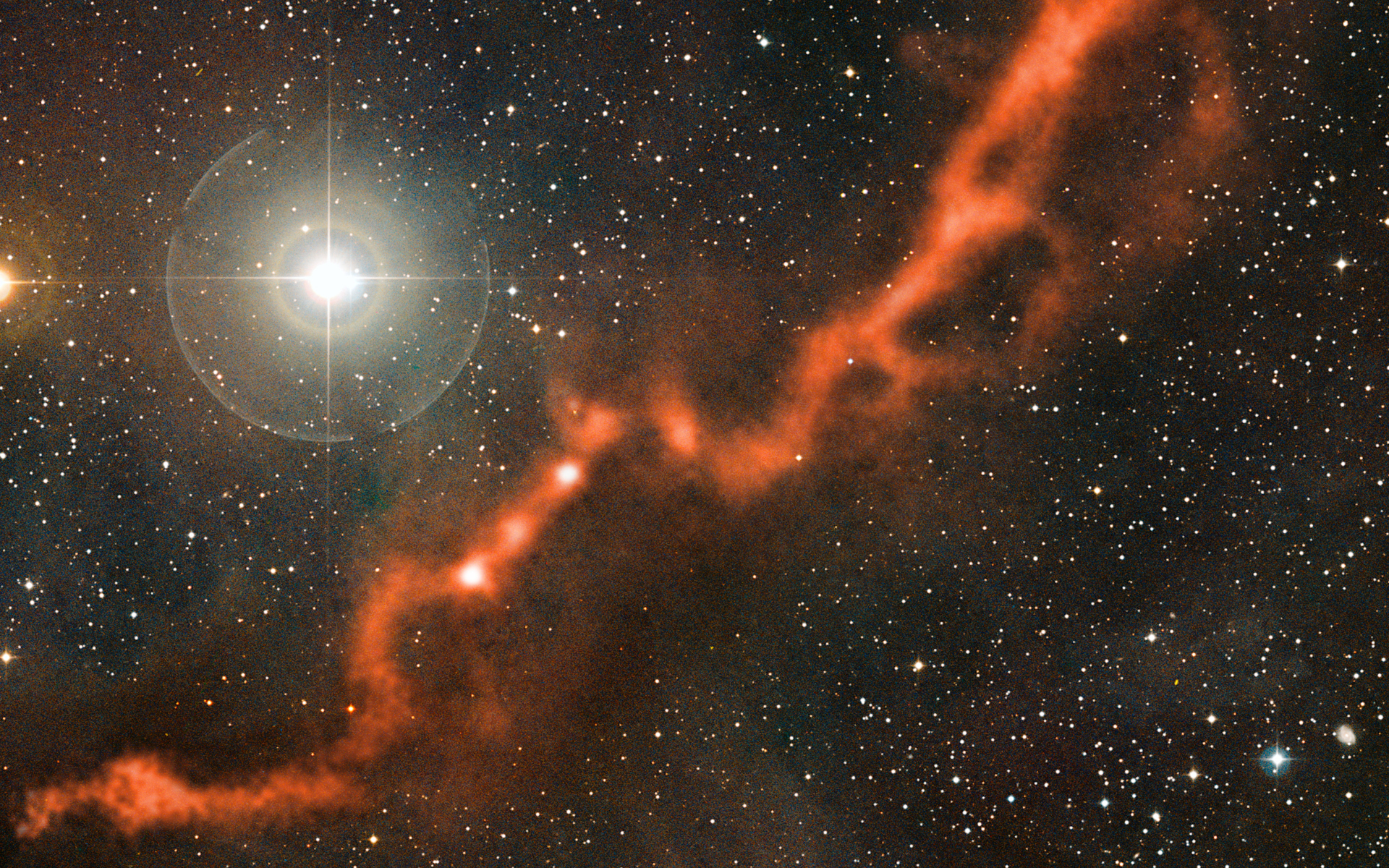Astronomers unravel how complex organic molecules form in deep space
A friendly molecule called ortho-benzyne is a key player.

Astronomers have found a friendly molecule in deep space.
New research shows how a simple molecule called ortho-benzyne helps form more complex organic molecules deep inside a frigid gas cloud. The team says it plays a small but critical role in creating chemically rich building blocks that will eons later form young stars and planets.
In the last few years, astronomers have discovered a bunch of complex organic molecules in rapid succession inside the dense Taurus Molecular Cloud-1 (TMC-1), which is a stellar nursery in the constellation Taurus located some 440 light-years from Earth.
Forming large molecules requires heat, which is in short supply in TMC-1. The cloud’s temperatures dip as low as minus 440 degrees Fahrenheit (minus 263 degrees Celsius), so astronomers have struggled to explain how complex molecules with lengthy names like 1-ethynyl cyclopentadiene came to be in the gas cloud in surprising abundance.
Related: Mysterious globular clusters could unlock the secrets of galaxy formation
"Researchers kept detecting these molecules in TMC-1, but their origin was unclear," study lead author Jordy Bouwman, a cosmochemist and professor at the University of Colorado Boulder, said in a statement.
Now, research by Bouwman's team found that ortho-benzyne, which was discovered inside TMC-1 only in August 2021, drives complex chemical reactions and is at least partly responsible for the presence of large molecules inside the gas cloud.
Get the Space.com Newsletter
Breaking space news, the latest updates on rocket launches, skywatching events and more!
Unlike most elements, researchers say ortho-benzyne is one of the "extroverts of the chemistry world" because it does not require a lot of heat for chemical reactions, so it bonds easily with other molecules. This way, it serves a critical role in improving the chemical complexity of cold stellar nurseries like TMC-1.
"We're only at the start of truly understanding how we go from these small building blocks to larger molecules," Bouwman said in the same statement. "I think we'll find that this chemistry is so much more complex than we thought, even at the earliest stages of star formation."
The team made the new observations using a technique (also with a lengthy name) called photoelectron photoion coincidence spectroscopy. Essentially, the process allowed researchers to learn the outcomes of various chemical reactions, and they found that ortho-benzyne and methyl radicals — another frequent sighting in molecular clouds — can easily combine to form larger, more complex organic compounds.
Currently, there are two leading theories about how abundant hydrocarbons and other ringed compounds materialized in gas clouds. One posits that carbon-bearing molecules called polycyclic aromatic hydrocarbons (PAHs) — which are thought to be important precursors to more complex molecules — were inherited and broken down from earlier stages of cloud evolution. The second theory suggests that large molecules built up in-situ from smaller, simpler elements. The latest findings add evidence for the latter idea, researchers say.
Bouwman's team used an astrochemical model to see how ortho-benzyne reactions form bigger molecules (like those with long names) in deep space. They simulated reactions happening in TMC-1 by plugging in the amounts of different elements gathered from recent observations targeting the gas cloud.
According to the study, these simulations with ortho-benzyne as the prime candidate were an "excellent reproduction" of complex compounds like 1-ethynyl cyclopentadiene, and in similar concentrations spotted by astronomers in TMC-1 using telescopes.
"Our findings may just change the view on what ingredients we have in the first place to form new stars and new planets," Bouwman said.
The research is described in a paper published Feb. 6 in the journal Nature Astronomy.
Editor's note: This article was edited at 3:30 p.m. EST on Feb. 17 to clarify that the molecule in this experiment is ortho-benzyne.
Follow Sharmila Kuthunur on Twitter @Sharmilakg. Follow us @Spacedotcom, or on Facebook and Instagram.
Join our Space Forums to keep talking space on the latest missions, night sky and more! And if you have a news tip, correction or comment, let us know at: community@space.com.

Sharmila Kuthunur is a Seattle-based science journalist focusing on astronomy and space exploration. Her work has also appeared in Scientific American, Astronomy and Live Science, among other publications. She has earned a master's degree in journalism from Northeastern University in Boston. Follow her on BlueSky @skuthunur.bsky.social
-
regniweol Reply
Hey editors at Space.com!Admin said:New research shows how a simple molecule called ortho-benzene helps form larger, more complex organic molecules at the core of frigid gas clouds in deep space.
Astronomers unravel how complex organic molecules form in deep space : Read more
****This article has a major error in it. ****
I'm an organic chemist. As I was reading I was like this doesn't make any sense, but this is the science I do for a living. So I brought up the article that it is based on. The reactive species that this article is about is not "ortho-benzene" its ortho-BENZYNE. Theres a major, major difference.
(Weird thing is combining ortho and benzene like this is *close* to a coherent concept; so maybe you can see how someone would make the mistake, but that kinda makes it worse. Kind of like writing about "black wholes" or "starboats" or something.)









